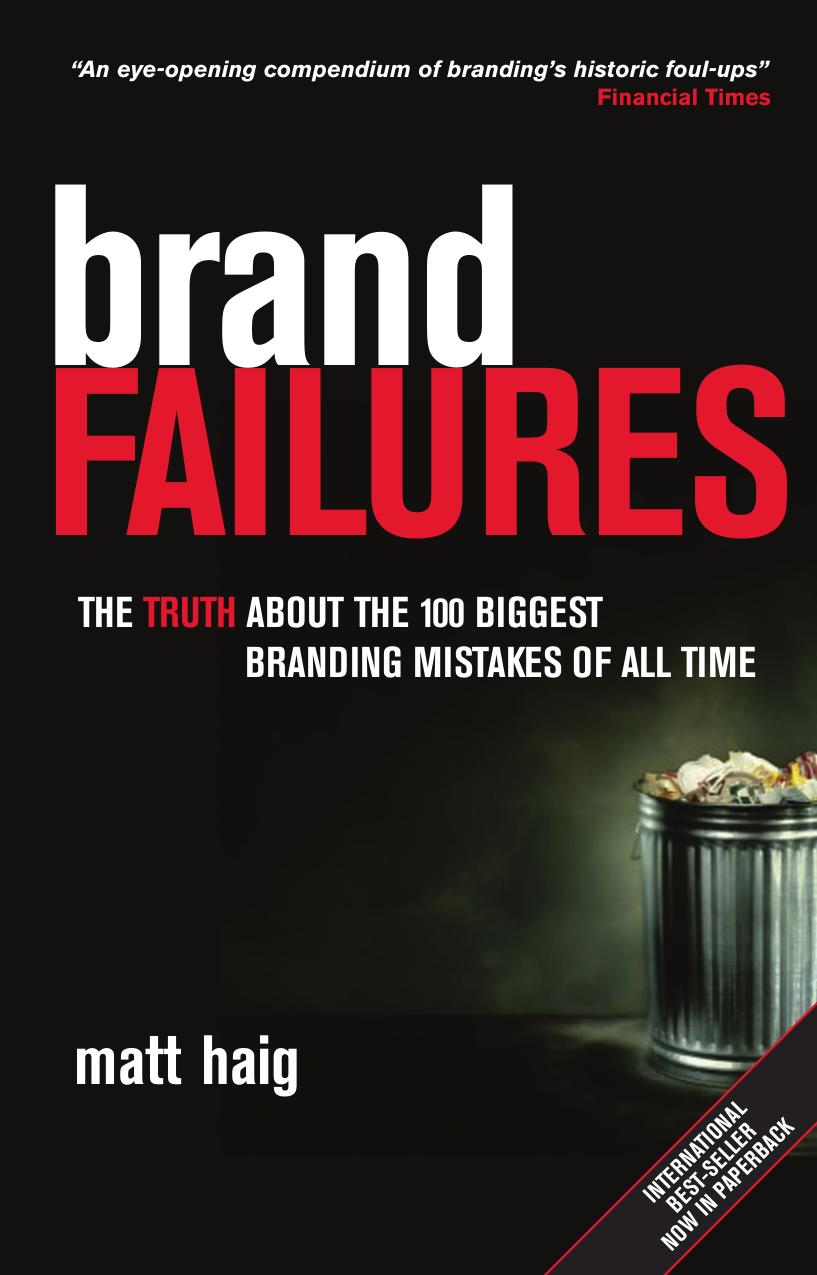Brand Failures: The Truth About the 100 Biggest Branding Mistakes of All Time by Matt Haig

Author:Matt Haig
Language: eng
Format: mobi, epub, pdf
Tags: Brand Choice, Management, Production & Operations Management, Reference, Marketing, Brand Loyalty, Advertising & Promotion, General, Consumer Guides, Branding (Marketing), Business & Economics
ISBN: 9780749462994
Publisher: Kogan Page
Published: 2003-01-02T00:00:00+00:00
48 Kellogg’s in India
Kellogg’s is, of course, a mighty brand. Its cereals have been consumed around the globe more than any of its rivals. Sub-brands such as Corn Flakes, Frosties and Rice Krispies are the breakfast favourites of millions.
In the late 1980s, the company had reached an all-time peak, commanding a staggering 40 per cent of the US ready-to-eat market from its cereal products alone. By that time, Kellogg’s had over 20 plants in 18 countries worldwide, with yearly sales reaching above US $6 billion.
However, in the 1990s Kellogg’s began to struggle. Competition was getting tougher as its nearest rivals General Mills increased the pressure with its Cheerios brand. Kellogg’s management team was accused of being ‘unimaginative’, and of ‘spoiling some of the world’s top brands’ in a 1997 article in Fortune magazine.
In core markets such as the United States and the UK, the cereal industry has been stagnant for over a decade, as there has been little room for growth. Therefore, from the beginning of the 1990s Kellogg’s looked beyond its traditional markets in Europe and the United States in search of more cereal-eating consumers. It didn’t take the company too long to decide that India was a suitable target for Kellogg’s products. After all, here was a country with over 950 million inhabitants, 250 million of whom were middle class, and a completely untapped market potential.
In 1994, three years after the barriers to international trade had opened in India, Kellogg’s decided to invest US $65 million into launching its number one brand, Corn Flakes. The news was greeted optimistically by Indian economic experts such as Bhagirat B Merchant, who in 1994 was the director of the Bombay Stock Exchange. ‘Even if Kellogg’s has only a 2 per cent market share, at 18 million consumers they will have a larger market than in the US itself,’ he said at the time.
However, the Indian sub-continent found the whole concept of eating breakfast cereal a new one. Indeed, the most common way to start the day in India was with a bowl of hot vegetables. While this meant that Kellogg’s had few direct competitors it also meant that the company had to promote not only its product, but also the very idea of eating breakfast cereal in the first place.
The first sales figures were encouraging, and indicated that breakfast cereal consumption was on the rise. However, it soon became apparent that many people had bought Corn Flakes as a one-off, novelty purchase. Even if they liked the taste, the product was too expensive. A 500-gram box of Corn Flakes cost a third more than its nearest competitor. However, Kellogg’s remained unwilling to bow to price pressure and decided to launch other products in India, without doing any further research of the market. Over the next few years Indian cereal buyers were introduced to Kellogg’s Wheat Flakes, Frosties, Rice Flakes, Honey Crunch, All Bran, Special K and Chocos Chocolate Puffs – none of which have managed to replicate the success they have encountered in the West.
Download
Brand Failures: The Truth About the 100 Biggest Branding Mistakes of All Time by Matt Haig.epub
Brand Failures: The Truth About the 100 Biggest Branding Mistakes of All Time by Matt Haig.pdf
This site does not store any files on its server. We only index and link to content provided by other sites. Please contact the content providers to delete copyright contents if any and email us, we'll remove relevant links or contents immediately.
| Direct | Global |
| Industrial | Multilevel |
| Product Management | Research |
| Telemarketing | Web Marketing |
Influence: The Psychology of Persuasion by Robert B. Cialdini(4715)
The Miracle Morning by Hal Elrod(4637)
The Hacking of the American Mind by Robert H. Lustig(4318)
Pre-Suasion: A Revolutionary Way to Influence and Persuade by Robert Cialdini(4144)
Unlabel: Selling You Without Selling Out by Marc Ecko(3587)
Ogilvy on Advertising by David Ogilvy(3503)
Hidden Persuasion: 33 psychological influence techniques in advertising by Marc Andrews & Matthijs van Leeuwen & Rick van Baaren(3472)
Purple Cow by Seth Godin(3138)
Who Can You Trust? by Rachel Botsman(3086)
Kick Ass in College: Highest Rated "How to Study in College" Book | 77 Ninja Study Skills Tips and Career Strategies | Motivational for College Students: A Guerrilla Guide to College Success by Fox Gunnar(3071)
The Marketing Plan Handbook: Develop Big-Picture Marketing Plans for Pennies on the Dollar by Robert W. Bly(2975)
This Is Marketing by Seth Godin(2969)
I Live in the Future & Here's How It Works by Nick Bilton(2934)
The Power of Broke by Daymond John(2896)
Building a StoryBrand by Donald Miller(2840)
The Tipping Point by Malcolm Gladwell(2825)
The 46 Rules of Genius: An Innovator's Guide to Creativity (Voices That Matter) by Marty Neumeier(2796)
Draw to Win: A Crash Course on How to Lead, Sell, and Innovate With Your Visual Mind by Dan Roam(2732)
Market Wizards by Jack D. Schwager(2643)
